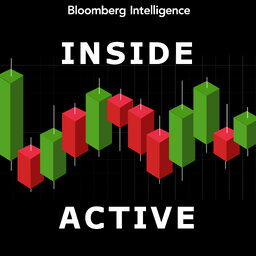Guinness’ Jonathan Waghorn on Sustainable Energy
Themes ranging from decentralized energy to nuclear to solar have found fresh footing this year due to secular growth trends such as the acceleration of electrification needs. In this episode of Inside Active, host David Cohne, mutual fund and active-management analyst with Bloomberg Intelligence, along with co-host Breanne Dougherty, head of thematic strategy at Bloomberg Intelligence, spoke with Jonathan Waghorn, a portfolio manager on the Guinness Global Energy and Guinness Sustainable Energy strategies, about the energy transition. They looked at why fossil fuels will continue to play a role in the shift and how technology companies are focusing on renewable sources. They also discuss the firm’s top-down and bottom-up approaches, including its global energy model and quantitative screening criteria, as well as why the portfolio is equal-weighted.
 Inside Active by Bloomberg Intelligence
Inside Active by Bloomberg Intelligence


